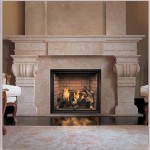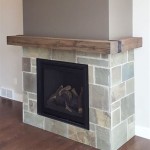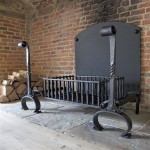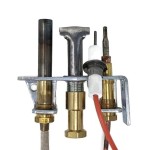Gas Fireplace Troubleshooting: A Comprehensive Guide
A gas fireplace provides efficient and convenient heating, adding ambiance to a living space with the visual appeal of a traditional fire without the associated mess and labor. However, like any mechanical appliance, gas fireplaces can experience malfunctions. This article provides a comprehensive guide to troubleshooting common issues encountered with gas fireplaces, enabling homeowners to identify the root cause of the problem and potentially implement solutions.
Pilot Light Issues
The pilot light is a small, continuous flame that ignites the main burner in a gas fireplace. Issues with the pilot light are among the most common reasons a gas fireplace fails to operate correctly. These issues can range from a pilot light that refuses to light to one that repeatedly goes out after ignition.
No Pilot Light: If the pilot light will not ignite, the first step is to verify the gas supply. Check that the main gas valve to the fireplace is in the "on" position. If the gas valve is open, examine the pilot assembly. Debris or carbon buildup can obstruct the pilot orifice, preventing gas flow. Gently clean the orifice using a thin wire or a specialized pilot cleaning tool. Avoid using anything that could enlarge the orifice, as this can affect the pilot flame's stability. If the pilot still fails to light, the igniter may be malfunctioning. The igniter, which can be a spark igniter or a hot surface igniter, is responsible for creating the initial spark or heat that ignites the gas. Inspect the igniter for damage or corrosion. Use a multimeter to test the igniter's continuity. If there is no continuity, the igniter needs replacement.
Pilot Light Goes Out: A pilot light that ignites but subsequently extinguishes often points to a problem with the thermocouple or thermopile. The thermocouple is a safety device that senses the heat from the pilot flame. When the pilot is lit, the thermocouple generates a small electrical current that keeps the main gas valve open. If the pilot flame is unstable or improperly positioned on the thermocouple, the electrical current may be insufficient, causing the gas valve to close and extinguish the pilot. Ensure the pilot flame is enveloping the thermocouple tip. If the flame is weak or yellow, cleaning the pilot orifice may resolve the issue. If the pilot flame appears normal, but the pilot still extinguishes, the thermocouple itself may be faulty. A thermocouple can be tested using a multimeter. Connect the multimeter to the thermocouple terminals and measure the millivolt output with the pilot lit. Refer to the fireplace manufacturer's specifications for the correct millivolt range. If the output is below the specified range, the thermocouple needs to be replaced. In some gas fireplaces, a thermopile is used instead of a thermocouple. A thermopile generates a larger electrical current than a thermocouple and is used in fireplaces with more complex control systems. The troubleshooting process for a thermopile is similar to that of a thermocouple, but the voltage readings will be higher.
Draft Issues: External factors, such as drafts, can also cause a pilot light to extinguish. Ensure that the fireplace and its venting system are properly sealed. Check for any gaps or cracks around the fireplace unit and seal them with a suitable sealant. Inspect the venting system for obstructions, such as bird nests or debris, that could be disrupting the airflow and creating downdrafts. A properly functioning venting system is crucial for maintaining a stable pilot flame and preventing the buildup of dangerous gases.
Main Burner Problems
Issues with the main burner can manifest in various ways, including the burner failing to ignite, producing a weak or uneven flame, or emitting unusual odors.
Burner Fails to Ignite: If the pilot light is lit but the main burner will not ignite, the problem likely lies in the gas valve or the control system. First, verify that the gas valve is set to the "on" position and that the thermostat is calling for heat. If these are in order, the gas valve itself may be malfunctioning. Gas valves are complex components that regulate the flow of gas to the burner. They can fail due to internal corrosion, electrical problems, or mechanical issues. Testing a gas valve typically requires specialized equipment and expertise. It is often advisable to consult a qualified technician for gas valve repair or replacement. In some cases, the problem may be with the control system, such as the thermostat or remote control receiver. Ensure that the thermostat batteries are fresh and that the thermostat is properly communicating with the fireplace. If the fireplace has a remote control, try using the manual override switch on the fireplace to ignite the burner. This can help determine whether the problem lies with the remote control system.
Weak or Uneven Flame: A weak or uneven flame can indicate a problem with gas pressure or burner cleanliness. Insufficient gas pressure can result in a small, flickering flame that does not provide adequate heat. This issue may require adjusting the gas pressure regulator, a task that should be performed by a qualified technician. A buildup of dust, debris, or carbon deposits on the burner can also restrict gas flow and cause an uneven flame pattern. Carefully clean the burner using a soft brush or vacuum cleaner attachment. Avoid using abrasive cleaners or solvents, as these can damage the burner. Inspect the burner ports for any obstructions and clear them with a thin wire or needle. After cleaning, ensure that all burner components are properly reassembled.
Unusual Odors: Any unusual odors emanating from the fireplace should be investigated immediately. A rotten egg smell often indicates a gas leak. If you suspect a gas leak, evacuate the premises immediately and contact the gas company or a qualified technician. Do not attempt to locate or repair the leak yourself. Other unusual odors, such as a burning smell, may indicate that dust or debris has accumulated on the burner or other hot components. Clean the fireplace thoroughly and ensure that all vents are clear. If the odor persists after cleaning, it may indicate a more serious problem, such as a malfunctioning component or a venting issue. Consult a qualified technician for further diagnosis and repair.
Venting System Issues
The venting system is crucial for safely removing combustion byproducts, such as carbon monoxide, from the home. A properly functioning venting system is essential for both safety and performance. Issues with the venting system can lead to dangerous gas buildup, inefficient operation, and damage to the fireplace itself.
Obstructions: Obstructions in the venting system are a common cause of fireplace problems. Bird nests, leaves, and other debris can accumulate in the vent pipes, restricting airflow and causing the fireplace to malfunction. Inspect the venting system regularly for any obstructions. Remove any debris that is found. Ensure that the vent caps are properly installed and in good condition. Damaged or missing vent caps can allow debris to enter the venting system and create obstructions.
Improper Venting: Incorrectly installed or sized venting can also cause problems. The venting system must be properly sized and installed according to the fireplace manufacturer's specifications. Undersized venting can restrict airflow, leading to incomplete combustion and the buildup of dangerous gases. Improperly installed venting can create leaks or allow combustion byproducts to enter the home. If you suspect that the venting system is not properly installed, consult a qualified technician for inspection and correction. It is crucial to ensure that the venting system meets all applicable codes and regulations.
Corrosion: Over time, the venting system can corrode due to exposure to moisture and combustion byproducts. Corrosion can weaken the vent pipes and create leaks. Inspect the venting system regularly for signs of corrosion, such as rust or pitting. Replace any corroded sections of vent pipe to prevent leaks and ensure safe operation. Use only venting materials that are approved for use with gas fireplaces. Improper venting materials can corrode quickly and pose a safety hazard.

Reasons Your Gas Fireplace Isn T Working Experts

Gas Fireplace Troubleshooting Tips And Tricks Vertical Chimney Care

Gas Fireplace Won T Stay Lit Magic Touch Mechanical

Gas Fireplace Pilot Light On But Won T Start Causes Fixes

Trouble Shooting Tips So You Won T Be Stumped By Gas Fireplace Issues

Safety Cleaning And Trouble Shooting Ventless Gas Fireplaces Grills Parts Service

My Gas Fireplace Won T Light Resetting The Control Module

Troubleshooting Gas Fireplace Issues On Your Own

Heatilator Gas Fireplace Troubleshooting

Gas Fireplace Wont Light Diagnoses And Troubleshoot In One Easy Guide Warmthpedia
Related Posts








